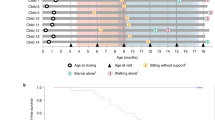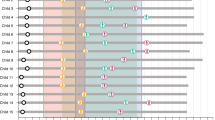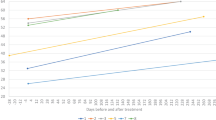Abstract
Approval of Spinraza (nusinersen) for treatment of spinal muscular atrophy prompts consideration of a number of ethical issues that arise whenever a new treatment is proposed for a serious condition, especially one that is rare and can devastatingly affect children. Patients, families, clinicians, researchers, institutions and policymakers all must take account of the ways that newly available treatments affect informed and shared decision-making about therapeutic and research options. The issues to consider include: addressing what is still uncertain and unknown; the possibility that potential benefits will be exaggerated and potential harms underemphasized in the media, by advocacy organizations, and in consent forms and processes; the high cost of many novel drugs and biologics; the effects of including conditions of variable phenotype in state-mandated newborn screening panels; and how new treatments can change the standard of care, altering what is and is not known about a disorder and posing challenges for decision-making at both individual and policy levels. The good news that Spinraza brings thus requires additional attention to its ethical and policy implications, to improve counseling and shared decision-making about treatment and research options for patients and all involved in their care.
This is a preview of subscription content, access via your institution
Access options
Subscribe to this journal
Receive 12 print issues and online access
$259.00 per year
only $21.58 per issue
Buy this article
- Purchase on Springer Link
- Instant access to full article PDF
Prices may be subject to local taxes which are calculated during checkout
Similar content being viewed by others
References
Gavrilov DK, Shi X, Das K, Gilliam TC, Wang CH . Differential SMN2 expression associated with SMA severity. Nat Genet 1998; 20: 230–231.
Russman BS . Spinal muscular atrophy: clinical classification and disease heterogeneity. J Child Neurol 2007; 22: 946–951.
Thomas NH, Dubowitz V . The natural history of type 1 (severe) spinal muscular atrophy. Neuromuscul Disord 1994; 4: 497–502.
Kolb SJ, Kissle JT . Spinal muscular atrophy. Neurol Clin 2015; 33: 831–846.
Chiriboga CA, Swoboda KJ, Darras BT, Iannaccone ST, Hontes J, De Vivo DC et al. Results from a phase 1 study of nusinersen (ISIS-SMN Rx) in children with spinal muscular atrophy. Neurology 2016; 86: 890–897.
Finkel RS, Chiriboga CA, Vajsar J, Day JW, Montes J, De Vivo DC et al. Treatment of infantile-onset spinal muscular atrophy with nusinersen: a phase 2, open-label, dose-escalation study. Lancet 2016; 388: 3017–3026.
Biogen Press Release, 2016. US. FDA approves Biogen’s Spinraza (nusinersen), the first treatment for spinal muscular atrophy. Available at: http://media.biogen.com/press-release/neurodegenerative-diseases/us-fda-approves-biogens-spinraza-nusinersen-first-treatment (accessed on 4 February 2017).
FDA News Release, 2016. FDA approves first drug for spinal muscular atrophy. Available at: http://www.fda.gov/NewsEvents/Newsroom/PressAnnouncements/ucm534611.htm (accessed on 4 February 2017).
Hache M, Swoboda KJ, Sethna N, Farrow-Gillespie A, Khandji A, Xia S et al. Intrathecal injections in children with spinal muscular atrophy: nusinersen clinical trial experience. J Child Neurol 2016; 3: 899–906.
Gawande A. Complications: A Surgeon’s Notes on an Imperfect Science. Picador: New York, NY, USA, 2002..
Arkin LM, Sondhi D, Worgall S, Suh LHK, Hackett NR, Kaminsky SM et al. Confronting the issues of therapeutic misconception, enrollment decisions, and personal motives in genetic medicine-based clinical research studies for fatal disorders. Hum Gene Ther 2005; 16: 1028–1036.
McCoy MS, Carniol M, Chockley K, Urwin JW, Emanuel EJ, Schmidt H . Conflicts of interest for patient-advocacy organizations. N Eng J Med 2017; 376: 880–885.
Tribble SJ. Drugmakers are turning patients with rare diseases into D.C. lobbyists, Kaiser Health News, 10 April 2017. Available at: http://khn.org/news/drugmakers-help-turn-patients-with-rare-diseases-into-d-c-lobbyists/ (accessed on 15 April 2017).
Richtel M. Therapies that can attack cancer, and organs. New York Times 4 December 2016, pp A1..
Shobit S. Biogen, Ionis under fire for Spinraza. Investopedia, 4 January 2017. Available at: http://www.investopedia.com/news/biogen-ionis-under-fire-spinraza-biib-ions/?ad=dirN&qo=investopediaSiteSearch&qsrc=0&o=40186 (accessed on 5 February 2017).
Thomas K. Hefty price set on a new drug that can stunt muscle disease. New York Times 31 December 2016, pp B1..
Biogen, SMA 360. Available at: https://www.spinraza.com/en_us/home/patient-support-services/biogen-support-program.html (accessed on 5 February 2017).
Genetic Information and Nondiscrimination Act, 2008. Pub L No 110-233, 122 Stat 881..
US Department of Health and Human Services, 2009. 'GINA' the Genetic Information Nondiscrimination Act of 2008: information for researchers and health care professionals. Available at: https://www.genome.gov/pages/policyethics/geneticdiscrimination/ginainfodoc.pdf (accessed on 5 February 2017).
Thomas L. The technology of medicine. In: Lives of a Cell: Notes of a Biology Watcher. Viking Press: New York, NY, USA, 1974, pp 31–36..
Lawton S, Hickerton C, Archibald AD, McClaren BJ, Metcalfe SA . A mixed methods exploration of families’ experiences of the diagnosis of childhood spinal muscular atrophy. Eur J Hum Genet 2015; 23: 575–580.
Feudtner C. The want of control: ideas and ideals in the management of diabetes. In: Bittersweet: Diabetes, Insulin, and the Transformation of Illness. UNC Press: Chapel Hill, NC, USA, 2003, pp 121–145..
Baker HB, McQuilling JP, King NMP . Ethical considerations in tissue engineering research: case studies in translation. Methods 2016; 99: 135–144.
Churchill LR, Collins ML, King NMP, Pemberton S, Wailoo K . Genetic research as therapy: implications of 'gene therapy' for informed consent. J Law Med Ethics 1998; 26: 38–47.
Grady C . Enduring and emerging challenges of informed consent. N Engl J Med 2015; 372: 855–862.
Acknowledgements
This work was supported in part by the National Center for Advancing Translational Sciences of the National Institutes of Health under award number U01TR001792.
Disclaimer
The content is solely the responsibility of the authors.
Author information
Authors and Affiliations
Corresponding author
Ethics declarations
Competing interests
The authors declare no conflict of interest.
Rights and permissions
About this article
Cite this article
King, N., Bishop, C. New treatments for serious conditions: ethical implications. Gene Ther 24, 534–538 (2017). https://doi.org/10.1038/gt.2017.32
Received:
Revised:
Accepted:
Published:
Issue Date:
DOI: https://doi.org/10.1038/gt.2017.32
This article is cited by
-
Do we always need to treat patients with spinal muscular atrophy? A personal view and experience
Orphanet Journal of Rare Diseases (2021)
-
Effects of nusinersen after one year of treatment in 123 children with SMA type 1 or 2: a French real-life observational study
Orphanet Journal of Rare Diseases (2020)
-
Perspectives in genetic counseling for spinal muscular atrophy in the new therapeutic era: early pre-symptomatic intervention and test in minors
European Journal of Human Genetics (2019)
-
Current evidence for treatment with nusinersen for spinal muscular atrophy: a systematic review
Acta Neurologica Belgica (2019)
-
Advances in therapy for spinal muscular atrophy: promises and challenges
Nature Reviews Neurology (2018)



